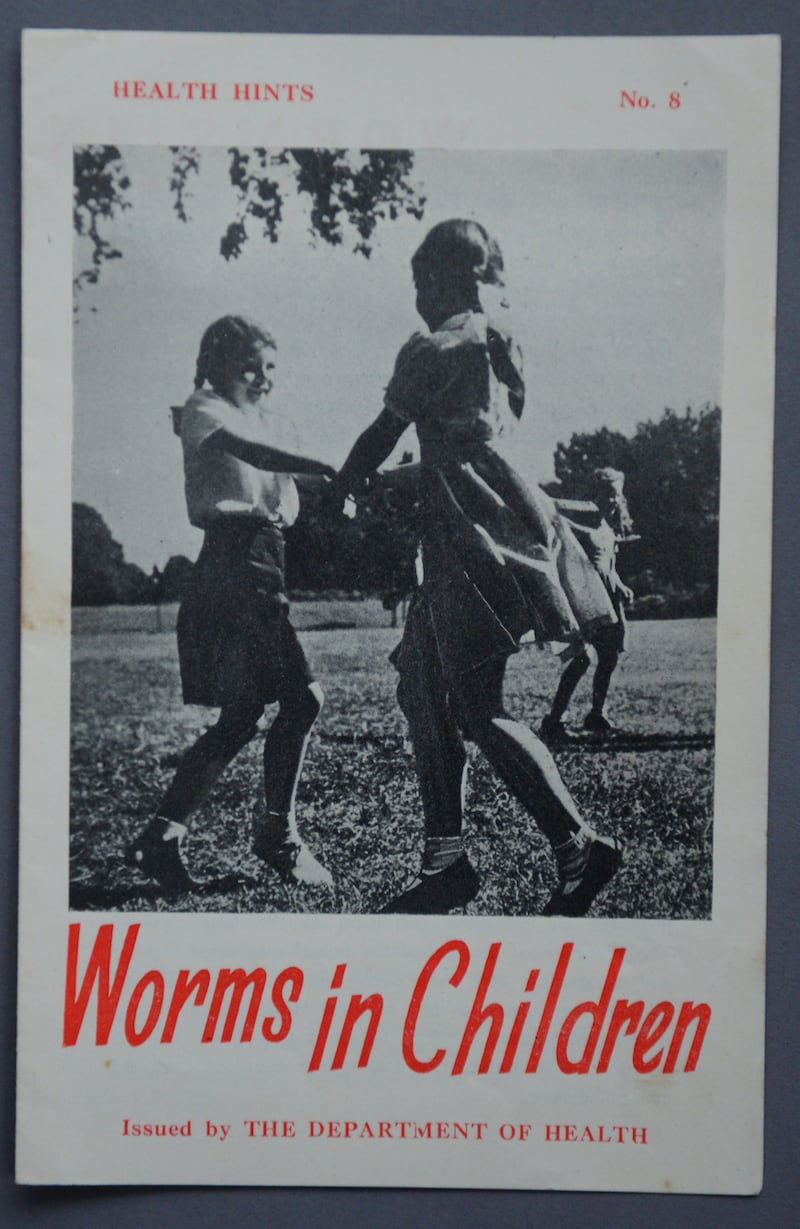In the mid-1950s the Department of Health circulated an envelope of eight pamphlets to houses nationwide, with an accompanying letter from minister for health James Ryan. These Health Hints for the Home offer an insight into the chief public health concerns - and contemporary medical advice - of that decade. Though some of the advice is now obsolete - even dangerous - some remains relevant today.
The last of these leaflets focused on worms in children.

Worms in children
There are many kinds of worms which may affect human beings and in some parts of the world they cause much serious illness. In Ireland we are fortunate -only three sorts of worms inhabit the intestines of human beings. They are the thread worm, the round worm and the tape worm. These all settle down and live in the bowel and their presence is usually recognised by their being passed in a bowel motion. The thread worm is common in this country, but neither of the others is.
Thread worms
Thread worms are small, white, thread-like bodies a quarter to a half inch in length. They inhabit the large bowel principally and are usually present in very large numbers, but on occasion they may be found in such places as the appendix. They may even wriggle to the outside, causing much irritation of the skin around the lower end of the bowel. Children who have thread worms very frequently reinfect themselves by scratching the irritated parts, thus getting the eggs on their fingers and conveying them to the mouth. Infection is rarely confined to one member of the family.
What harm do these thread worms cause? Their greatest significance lies in the fact that their presence indicates an unhealthy condition of the large bowel. The irritation of the end of the bowel may cause itching and scratching and may even disturb sleep. Thread worms may appear as bits of dirty white cotton thread in a freshly passed motion . . . If in doubt bring a sample to the doctor and he can make sure.
Treatment
Treatment to be successful should aim at:
1. Restoring the bowels to a health condition. Good food, plenty of fresh vegetables, drinks, fruit if possible, the avoidance of excess sweetstuffs, all play their part. Fresh air and exercise will help also.
2. Meticulous care of the hands; finger nails should be clipped short, hands should be washed with soap and water immediately before all meals, and always after using the toilet.
3. Getting rid of the worms. Your doctor can tell you what is best to use.
Other worms
Round worms resemble the common earth worm but are larger. They may be passed in bowel motions, in which case they are readily recognised. The eggs are also passed, and children may re-infect themselves, as with thread worms.
Tape worms are large, flat, tapering worms sometimes up to a few yards long. The head is small and attached to the bowel wall, and the worm is, therefore, hard to get rid of. Parts may come away and be passed in motions-they are easily recognised-but to clear one’s self of the worm completely requires special treatment.
Both round worms and tape worms can cause intestinal upsets. If you harbour either of these unwelcome guests, you should consult your doctor.
Health Hints for the home
Part 1: The menace of diphtheria
Part 2: If your child has mumps
Part 3: Flies on food
Part 4: Pain in the throat
Part 5: Coughs in Children
Part 6: Whooping gasp for air
Part 7: Dental health
Part 8: Worms in children

















